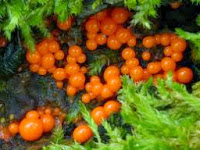 With over 2 million species, Kingdom Animalia is the largest of the kingdoms
in terms of its species diversity. But when you think of an "animal",
what image comes to mind? While mammals, birds, reptiles, amphibians,
and fish are the most familiar to us , over half of all the animal
species belong to a group of animals known as arthropods. Arthropods
include animals such as centipedes, crabs, insects, and spiders.
With over 2 million species, Kingdom Animalia is the largest of the kingdoms
in terms of its species diversity. But when you think of an "animal",
what image comes to mind? While mammals, birds, reptiles, amphibians,
and fish are the most familiar to us , over half of all the animal
species belong to a group of animals known as arthropods. Arthropods
include animals such as centipedes, crabs, insects, and spiders.
Animals are a major group of multicellular, eukaryotic organisms of the kingdom Animalia or Metazoa.
Their body plan eventually becomes fixed as they develop, although some
undergo a process of metamorphosis later on in their life. Most animals
are motile, meaning they can move spontaneously and independently. All
animals are also heterotrophs, meaning they must ingest other organisms
or their products for sustenance.
- All animals are multicellular, eukaryotic heterotrophs —they have multiple cells with mitochondria and they rely on other organisms for their nourishment.
- Adult animals develop from embryos: small masses of unspecialized cells
- Simple animals can regenerate or grow back missing parts
- Most animals ingest their food and then digest it in some kind of internal cavity.
- Somewhere around 9 or 10 million species of animals inhabit the earth.
- About 800,000 species have been identified.
- Animal Phyla- Biologists recognize about 36 separate phyla within the Kingdom Animalia.



.jpg)


